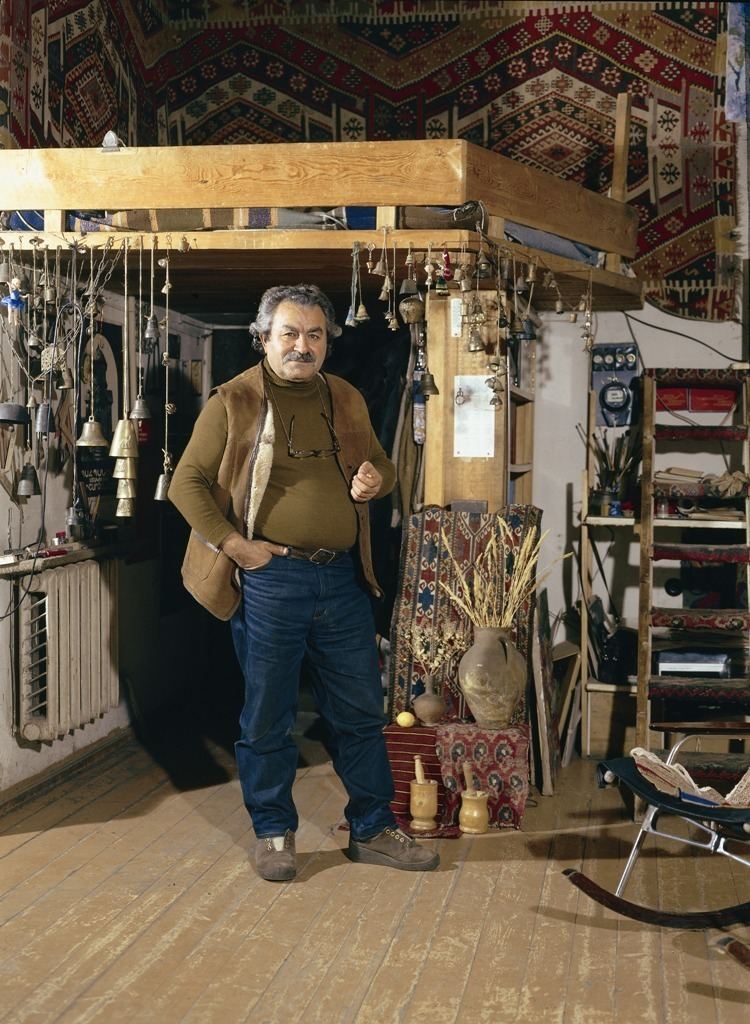Nationality Armenian Known for Painting, Tapestry | Role Artist Name Karapet Yeghiazaryan | |
 | ||
Notable work "Song About Armenia", "Victorious Return", "Soldier’s Weeding", "Blossom, Our Lord" Awards Honored Artist of Armenia (1983) | ||
Karapet Yeghiazaryan (Armenian: Կարապետ Եղիազարյան; March 7, 1932 in Yerevan – 2006 in Yerevan) was an Armenian painter, Honored Artist of Armenia, 1983.
Contents

Biography
Karapet Yeghiazaryuan was born in 1932 in Yerevan. The artistic depth of his nature was revealed in his childhood in his love towards nature, his perception of the beauty of its views and colors. He attended the painting group of the Ghoukassian Haouse of Pioneers (teacher Gagik Ghazaryan).
Karapet Yeghiazaryan’s works are exhibited in art galleries, museum, well-known cultural centers and private collections of Yerevan, Gyumri, Echmiadzin, Moscow, London, New York City, Kerch, Volgodonsk and in many cities of Russian Federation, the city of Timirtau in Kazakhstan, as well as other countries.
His daughter Anush Yeghiazaryan is the outstanding participant of the present stage of development of the Armenian tapestry.
Career
The personal style of Yeghiazaryan was formed progressively; his mastership grew year after year; skills shaping his own language in his works grew more perfect. The first attempts made by Yeghiazaryan were to introduce partial modifications in traditional oriental carpets. In these series of his work the most interesting is the tapestry Praying for Peace (1967), in which the author managed to put into natural connection human static figures with ornaments filling the entire surface of the work. The master organically transferred stylistic principles of the weaving art devices into the language of mosaics and obtained most interesting decorative effects, this time in the material of ‘stone carpet’. Yeghiazaryan created works with logical structure which allows to read with precision the author’s thought and to create a unique ornamental structural system. Along with strict compositional order, one feels in Yeghiazaryan’s works the material, the wool, its softness, tenderness, density, its amazing capacity of absorbing light to entirely render the deepness and strength of color.
Yeghiazaryan’s frame of themes are : native Armenia, national traditions, events of social life and images of nature. Each new work was a further step leading to the solutions of image, contents and artistic problems.
Works
Karapet Yeghiazaryan is the author of numerous mosaic panels
Exhibitions
Karapet Yeghioazaryan participated in numerous exhibitions, international symposiums and biennales, had his personal exhibitions in Armenia and abroad.
Quotes about Karapet Yeghiazaryan
“… in the mosaic made by Karapet Yeghiazaryan one can distinctly see carpet ornaments. Subsequently, the painter was guided by some fundamental compositional principles of weaving art, which influenced his works made with other materials, too.”
Professor Nikita Voronov
Art critic, PH.D., “Armenian Tapestry”, SovetakanArvest (Soviet Art), N 11, 1978, Yerevan (in Russian)
“Merited painter Karapet Yeghiazaryan is a multilaterally talented creator. His famous curtain Renaissance (1986) is decorating the scene of the Yerevan Sport and Concert Complex. I am the author of its composition, but the collaboration with Karapet Yeghiazaryna was indispensable to transform it into a curtain. Our common creative work created a piece of art of 360m 2, having 30 meters width and 12 meter height, which will decorate the wall of one of our architectural masterpieces”.
Grigor Khanjyan
Member of the USSR Academy of Fine arts, People’s Artist, “A Curtain Representing Art”. Sovetakan Hayastan (Soviet Armenia), July 1986, Yerevan (in Armenian)
